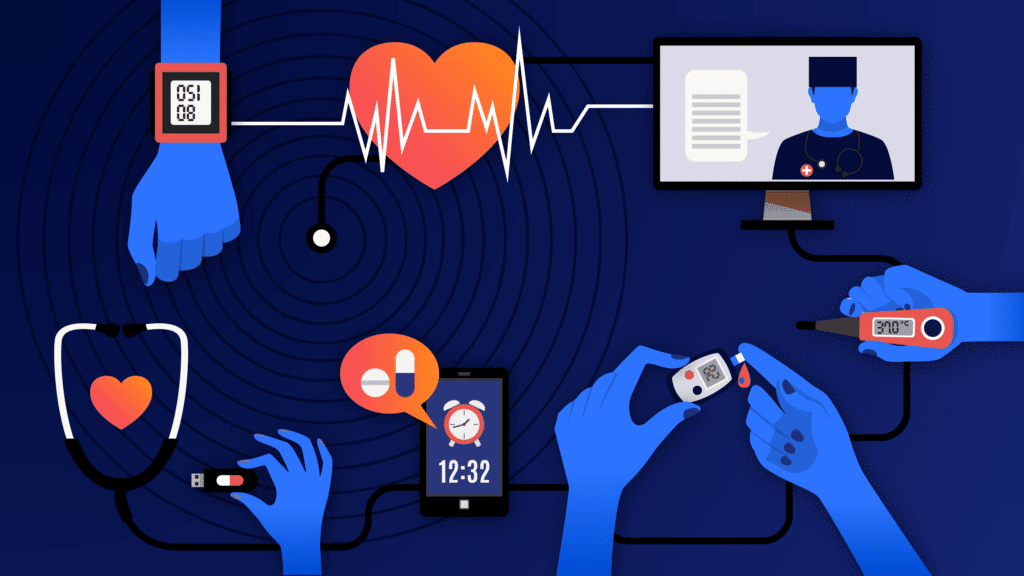Higher education, a sector notoriously slow to change, never quite adjusted to the loss of its historical model in the wake of the pandemic — in fact, nearly 90% of colleges and universities welcomed students back for in-person learning for the spring semester in 2022. The reason has a lot to do with revenue. Beyond tuition, many colleges and universities make their money from students living, eating, and taking part in other activities on and around campus. Virtual learning just wasn’t as profitable.
Going back to the “old” model, however, hasn’t corrected the problem. Enrollment numbers are down. One report found that more than 1 million fewer students are enrolled in colleges and universities when compared to pre-pandemic numbers. While all is not lost, time is ticking for post-secondary institutions to revisit their current models and find ways to not only differentiate themselves from others in the sector, but also secure competitive advantages. New pathways will be necessary for drawing students back and realizing the promise of the future.
A flexible educational experience
Though it should go without saying, technology will be at the core of an institution’s evolution toward new higher education models. But technology isn’t a differentiator on its own — nor is virtual learning. The National Council for State Authorization Reciprocity Agreements reported a 93% increase in distance education enrollment from fall 2019 to fall 2020. Chances are good that all institutions will adopt such an option moving forward, making them just as competitive as the next for enrollment.
Instead of relying solely on a virtual platform, a flexible educational experience — wherein students move seamlessly from virtual to in-person sessions — could provide endless potential and be the competitive advantage a college or university is looking for. A strong infrastructure and curriculum planning will be essential for making a smooth transition between virtual and in-person learning.
As with any new initiative, a pilot program using a single course or department could help even out the experience between the two modes of delivery. It would also offer college professors the opportunity to learn and adopt best practices for instructing hybrid classrooms before a full rollout of the program. Such a move would lead to better experiences and ensure success.
Experiential learning programs
Experiential learning is far from a new concept. Courses are available at many universities where students basically learn by doing. Hands-on experience, as most educators know, allows students to apply those theoretical concepts learned in the classroom to practical, real-world situations. If done right, students walk away with a better understanding of the course materials and applicable skills that could make them more marketable in the workplace.
While many programs have already started leaning into experiential learning, especially business programs, courses are still rather limited. Business students may have the option of gaining real-world experience by visiting a company located even in another country to work on a project, but those pursuing other paths could also benefit from similar opportunities. Institutions of higher education may want to consider expanding such high-value in-person interactions into other departments. Such an approach across disciplines can prepare students for the real world.
However, in-person experiential learning isn’t the only answer. The metaverse also holds the potential of allowing “hands-on” experience — just in the virtual realm. Students experience sensory aspects similar to in-person learning that allow remote enrollment to feel real. With time, colleges and universities will be able to accelerate virtual education and offer classes in dance, sculpture, anatomy, and much more through advances in the metaverse. First-mover advantage will go to those institutions that start exploring this experiential learning alternative now.
Clearer student outcomes
All too often, college students graduate unprepared for successfully transitioning into their chosen careers. A recent survey found that nearly half of Millennials feel their degrees weren’t worth the debt they’re now in. Though a hard pill to swallow for institutions of higher education, a simple fix could be the answer: clearer paths to achieve student outcomes.
Clearer paths should go beyond traditional internships, however. These opportunities are more so geared toward gaining real-world experience, not helping with the transition from college to all the responsibilities that come in a post-academic world. Providing students with a “fast track” to getting hired is a much more attractive alternative.
Perhaps colleges and universities may want to start establishing relationships with recruiters in a variety of industries to provide students a leg up. The same could be said for sharing big ideas and making connections with a number of local or regional companies. Not only does such a move increase the likelihood of improving student outcomes, but it can make an institution much more marketable.
Going back to the status quo does nothing for a college or university. It certainly won’t attract or encourage students to enroll, not in the number most institutions need. Solutions must be put in place to make the proposition of spending two, four, or more years to learn a trade enticing. That’s really the long and short of it.





















